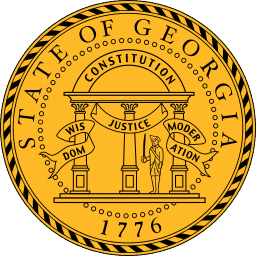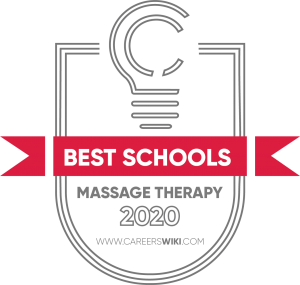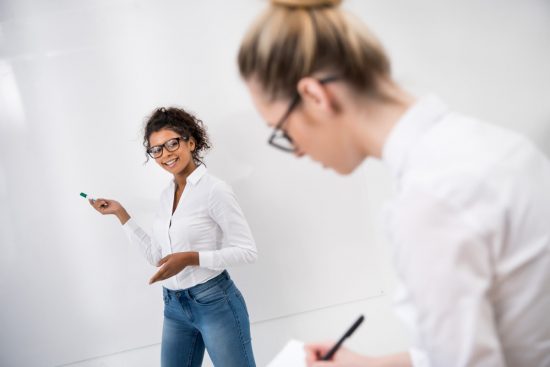…
There are 18 massage therapy schools in Georgia that state officials have approved.
Programs feature instruction in classrooms and labs, as well as hands-on experience at student clinics or private facilities. Curricula vary in the types of massage techniques they teach.
Most schools award certificates, which typically take less than a year to earn. Others offer associate’s degrees that require additional coursework. Both kinds of programs qualify graduates to apply for licenses.
This is a rapidly growing field in the Peach State, where government officials expect about 500 job openings each year during the decade ending in 2026. Scroll down to view the list of massage therapy schools in Georgia, or view schools in other states by clicking here.

The state Legislature created this regulatory agency in 2005 as part of the secretary of state’s office “to protect the public from unqualified practitioners.”
The board establishes education, training, and experience standards for massage therapists. It reviews license applications to ensure that those seeking to practice in the state are eligible, and also issues licenses to massage therapy businesses.
The officials ensure that practitioners renew their licenses and receive continuing education. They investigate complaints concerning alleged violations of laws and regulations. Disciplinary actions include fines as well as license suspensions and revocations.
The governor appoints all five board members. Four of them must have been professionally engaged in massage therapy in the state for at least three years. No more than one member may be a massage school owner. The fifth member represents the public.
To become a massage therapist in Georgia, a student is required to complete a school program that provides 500 or more clock hours of coursework and training. The state board stipulates that schools be recognized by the National Certification Board for Therapeutic Massage and Bodywork, as well as the Nonpublic Postsecondary Education Commission.
Curricula must include at least 440 hours of instruction, plus 50-60 hours of supervised clinical experience. The board mandates 125 hours of anatomy, physiology, and kinesiology courses; 200 hours of theory, technique, and practice; 40 hours of pathology; 10 hours of ethics and business management; and six hours of ethics.
The remaining 125 or more hours pertain to other subjects. Students must learn effleurage or gliding, tapotement or percussion, petrissage or kneading, stretching, superficial warming, contraindications, modesty and draping, client data collection, and therapeutic relationships.
Upon graduation, the next step is to register online with the National Certification Board for Therapeutic Massage and Bodywork to take the Massage and Bodywork Licensing Examination (MBLEx). Once approved, a candidate contacts Pearson VUE to schedule the exam at a testing center in Atlanta, Albany, Augusta, Dunwoody, Griffin, Macon, Marietta, Savannah, or Stockbridge.
The board reviews license applicants’ MBLEx results to determine whether they are qualified to practice in the state. Massage therapists must renew their licenses every two years, which involves obtaining 24 credits of continuing education from board-approved providers.
We selected the schools below based on the programs that they offer, accreditation, student population, graduation rate and reputation.
View our Ranking Methodology to learn more about how we rank schools.

86%
40
This 600-hour certificate program in Evans, which takes about six months to complete, provides full-time day and evening options. Classes start six times a year, with no more than 25 students.
Students specialize in clinical and orthopedic massage, myofascial release, or neuromuscular therapy and postural analysis during 125 hours of Allied Modalities classes.
They perform a dozen massage techniques and therapies at the Tuscany Classic Italian Spa, on the upper floor of the school’s picturesque stone building.
49%
252
This school, previously known as Rising Spirits, was originally called the New Life Institute School of Massage Excellence. It later became known as Rising Spirits.
The massage therapy program, available on Gwinnett’s Sandy Hills and Lilburn campuses, awards associate of applied science degrees. Students learn Swedish, deep-tissue, chair, and sports massage methods.
Other courses cover neuromuscular therapy, reflexology, and success techniques. The program includes experience in on-campus clinics where students provide treatments and therapies to the public.
83%
235
The 640-hour certificate program at this Atlanta school enables students to earn certificates within seven to nine months.
Among the many massage techniques that the courses teach are Swedish, therapeutic, deep-tissue, trigger-point, sports, Thai, chair, clinical, prenatal and other special populations, and alternative medicine. The curriculum also covers aromatherapy, body treatments, hydrotherapy, reflexology, Shiatsu, and neuromuscular therapies.
The school offers post-graduates an International Therapy Examination Council (ITEC) certification course concerning holistic massage and other advanced modalities.
43%
474
Most of the students here are from Augusta, Martinez, Grovetown, and Evans. The 720-hour certificate program takes as little as eight months to finish.
Students learn Swedish massage, therapeutic massage, and treatments for special populations. Along with the typical courses are Somatic Psychology; and Hydrotherapy & Aromatherapy. The program incorporates business concepts into many of its classes for those wishing to open their own massage therapy practices.
In labs, students practice on anatomy and organ-system mannequins. They take part in three rotations at the school’s student clinic and perform 100-hour internships.
78%
282
This is the state’s oldest school of its kind, having awarded certificates to more than 3,000 graduates since 1980.
The program “offers the full range of foundational certifications.” Courses cover Swedish and deep-tissue massage, neuromuscular therapy, reflexology, and seated massage. There is an on-site teaching clinic, and students do internships at public facilities. About 90 percent of graduates pass the MBLEx licensure test.
ASM’s research team partners with Emory University in clinical trials to study the biological benefits of massage in the treatment of generalized anxiety disorder, and how Swedish massage may relieve cancer patients’ fatigue.
67%
330
This private institution in Atlanta traces its history back more than 35 years. Graduates receive certificates after completing 675 hours of instruction and training. The program lasts 27 weeks, with day and evening classes available.
Courses include History of Massage, Cells and Tissues, Massage Equipment and Products, Swedish Massage, Athletic/Sports Massage, Deep Tissue Massage, Shiatsu, and Reflexology.
Students receive practical experience treating the public at an on-campus clinic. The school has a 100 percent acceptance rate, with about 50 students in the program each year.
61%
441
Located in Conyers, GCI began in 1975 as a cosmetology school called the Artistic Beauty College.
The institute offers a 750-hour massage therapy program that awards certificates. Many of the 250 hours that exceed state requirements are devoted to teaching additional massage techniques.
Students learn Western modalities like Swedish, deep-tissue, and medical massage; and Eastern methods such as Thai massage, reflexology, and aromatherapy. Other courses cover hydrotherapy, orthopedic assessment, massage for special populations, prenatal massage, and traditional Chinese medicine.
42%
3884
This public community college serves a seven-county area in southwest Georgia. The Neuromuscular Massage Therapist program is in a beautiful, modern facility on Veterans Parkway at the campus in Moultrie.
Incoming students must have certain minimum ACT or SAT scores, and pass placement tests in Reading, English, Writing, and Arithmetic. The program entails at least 59 semester hours in five semesters. In addition to the state-required coursework, there are classes in Interpersonal Relationships and Professional Development, and Student Success.
All of the program’s graduates have passed the licensure exam in recent years.
43%
3936
This school has an 11-county service area in south-central Georgia. Its neuromuscular therapy program is on the main campus in Valdosta.
Students learn Swedish massage, identification of diseases and conditions, medical documentation, and client care. There is “specialized training” in nervous system pathology, postural analysis, muscle energy techniques, myofascial release, and clinical reasoning.
In addition to the usual core courses, students must take English I, Foundations of Mathematics, Basic Psychology, Neural Science, and Professional Leadership. The program includes two clinical experiences.
60%
3053
This is the largest school in the state’s public technical college system, serving students from 13 counties. The institution is based in Waycross, but the neuromuscular massage therapy program is on the Golden Isles campus in Brunswick.
The curriculum consists of 59 credit hours. Students must pass these “basic skills” courses: English I, either Basic Psychology or Interpersonal Relations, and either Fundamentals of Mathematics or Business Math.
Besides the usual core courses, students are required to take Neural Science, Adjunctive Modalities, Licensure Review, and Professional Leadership. The program also features two clinical practices at area massage therapy facilities.
43%
5643
This Rock Spring school has three programs, each with day and evening class options.
The associate of science in massage therapy program involves 11.5 months of study over three to five semesters. Students may earn a certificate in therapeutic massage within three trimesters (11.5 months) during the day, or in four trimesters (15.5 months) at night. The certificate program in relaxation massage takes two trimesters (7.5 months) during the day, or three trimesters (11.5 months) in the evening.
Along with the typical core courses, the curriculum includes a nutrition class and multiple business classes.
$18
$38,000
28%
The average Georgia practitioner makes an annual salary of about $38,000 (or an hourly wage of more than $18.25), less than the national median of nearly $42,000 a year (or about $20 per hour).
The top 10 percent of earners receive more than $61,500 (or about $30) in the state, compared with over $78,000 (or almost $38) nationally. For the bottom 10 percent, the pay is more than $17,000 (or over $8) in Georgia; and nearly $21,400 (or over $10.25) nationally.
The state had 3,490 massage therapists in 2016. The number will rise to 4,470 by 2026, according to the U.S. Bureau of Labor Statistics. That would be a job-growth rate of 28 percent — faster than the national average of 26 percent and higher than that of most other professions.
Sources: U.S. Bureau of Labor Statistics, CareerOneStop

LIMITED TIME DEAL